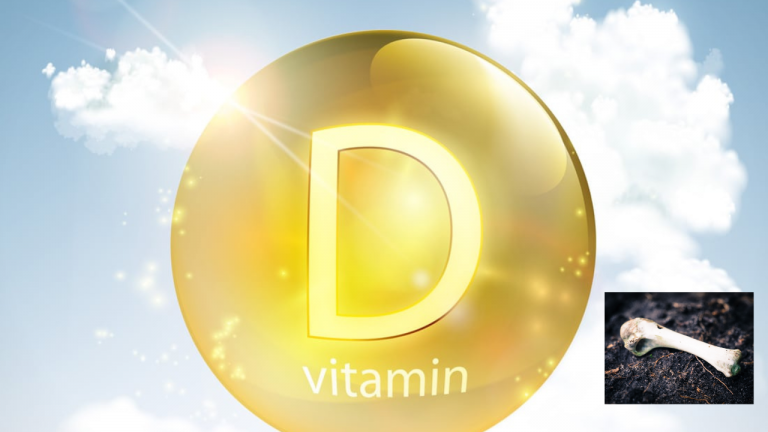How to Get Rid of a Head Cold

A head cold is nothing but a common cold in which the symptoms are more focused around the head and in the sinuses.
In the case of a head cold, along with other common cold or flu symptoms like a runny and stuffy nose, sore throat, cough, chills, and fever, you will also have a headache.
The reason you get a headache with a head cold is due to the release of molecules called cytokines. These molecules are released in relation to the body’s immune defense against viruses and are known to cause headaches.
On top of that, swelling and thick secretions accumulating in the sinus cavities also lead to headaches and sinus pain.
The symptoms of a head cold are usually at their worst during the first two to three days, before they gradually start to improve. In adults and older children, the symptoms usually last about seven to 10 days but can go on longer. The symptoms can have a huge impact on your daily life.
head cold
Adults get two or three colds each year, while kids can have eight or more annually.
Head colds are caused by several types of viruses, including rhinoviruses, human metapneumovirus (HMPV), human parainfluenza virus (HPIV), and respiratory syncytial virus (RSV), to name a few.
The virus gets transmitted when an infected person sneezes or coughs, projecting droplets infected with the virus into the air or onto people around them.
It is also possible to catch a head cold by coming into contact with infected surfaces or things, such as doorknobs and mobile phones. The virus can enter the body through a person’s eyes, mouth, or nose.
While anyone can get a head cold, certain factors increase the risk. Common risk factors include a weakened immune system, being under the age of 6, smoking, the winter season, and exposure to other people with head colds, particularly school children.
Irrespective of the risk factors and causes, there is still no foolproof treatment for a head cold. However, a few lifestyle changes and home remedies can make you comfortable and accelerate the healing process.
How to get rid of a head cold
Here are the ways to get rid of a head cold.
Inhale Steam
Steam is an effective way to treat a headache due to a head cold at home. Steam inhalation will calm your mucous membranes and help clear the congestion in your nose. This in turn will reduce the headache.
inhale steam to treat a head cold
Also, it is effective at reducing other symptoms like sore throat and cough.
Boil some water in a pan.
Optionally, add a few drops of essential oil.
Cover your head with a towel and lean forward over the bowl or pan containing the hot water.
Inhale the steam as many times as possible.
Repeat this treatment every 2 hours as needed for relief.
Also, taking a steam bath works similarly.
Compresses
To open the congested nasal passages and combat a headache due to a cold, using hot and cold compresses is very effective.
While a warm, moist compress applied on the sinus regions will ease the pressure and loosen the thick mucus, a cold compress will provide pain relief by constricting the blood vessels in the sinus regions.
compresses to treat a head cold
Fill one bowl with hot water and another bowl with cold water.
Put a washcloth in the hot water and wring out the excess water.
Place the washcloth on the area where you feel pain as well as on your nose for about 3 minutes.
Remove the warm compress and immediately apply the cold compress in the same way for 30 to 45 seconds.
Repeat this process alternating compresses 4 or 5 times a day to effectively relieve a headache.
Garlic
To deal with the symptoms of a head cold, garlic is very effective. It contains the compound allicin, which has antiviral properties that will fight the rhinovirus and certain other viruses. This means it can help kill the virus responsible for your head cold.
Also, adding garlic to your diet might even help you avoid getting sick in the first place.
An allicin-containing supplement can protect you from the common cold virus and even shorten the duration of a cold.
garlic oil for a head cold
Aged garlic extract supplementation may enhance immune cell function and may be partly responsible for the reduced severity of colds and flu.
Eat 1 or 2 raw garlic cloves or add a few drops of garlic oil to your food regularly to prevent as well as fight head cold symptoms.
If you have a cold, you can boil a few chopped garlic cloves in 1 cup of water. Remove it from the heat, and add 1 teaspoon of honey. Drink it 2 or 3 times a day until your cold is gone.
If you do not like the taste of garlic, you can opt for a supplement. Always consult your doctor before taking any supplement.
Ginger
Ginger is also beneficial in the treatment of a head cold.
Ginger has antiviral properties. This means it can help fight the root cause of the problem.
It also has anti-inflammatory properties that help reduce the inflammation in your nasal passages and lessen the excessive mucus that is being produced. This in turn reduces the headache and other symptoms of a head cold.
ginger to treat a head cold
It also activates natural opiates in the brain that help lessen the pain.
Simply drink ginger tea up to 3 times a day. To make ginger tea:
Boil 2 cups of water, then add 1 tablespoon of chopped ginger to it.
Cover and let it simmer on low heat for 5 minutes.
Turn off the heat and let it sit for another 5 minutes.
Strain the tea and add a little lemon juice and honey to it to enhance its taste as well as its health effects.
Ginger can also be taken in the form of lozenges to get relief from the symptoms.
Chicken Soup
Having a bowl of warm, homemade chicken soup is another simple yet effective way to deal with head cold symptoms.
It provides relief from common cold symptoms through its action on white blood cells that play a main role in fighting infections. Also, the steam that you inhale while having hot chicken soup helps loosen nasal congestion, which in turn eases the headache.
chicken soup to reduce head cold
Chicken soup may contain a number of substances with beneficial medicinal activity including an anti-inflammatory mechanism that could ease the symptoms of upper respiratory tract infections.
Chicken soup provides nutritional support and helps alleviate dehydration which can help in the management of cold symptoms.
For best results, make homemade chicken soup using organic vegetables and chicken and have it 2 or 3 times a day.
Saline Nasal Irrigation
Using a saline solution for nasal irrigation is another effective way to reduce nasal pressure, which in turn will lessen the headache as well as other symptoms of a head cold.
A saline solution will thin the mucus to help flush it out of the nasal passages.
saline nasal irrigation to relieve head cold
Dissolve 1 teaspoon of salt in 2 cups of warm distilled water.
Pour 1 cup of the solution into a neti pot.
Stand over a sink and place the tip of the spout into one nostril.
Tilt your head to the side and allow the water to run out through the other nostril.
Repeat the process with the other nostril.
Do this once daily for 3 days.
Using saline nasal irrigation for longer than 3 days can lead to rebound stuffiness so avoid overdoing it.
Cinnamon
Cinnamon can also help fight a head cold and ease the pain of a sore throat. Cinnamaldehyde is the major constituent of cinnamon bark that has antioxidant and anti-inflammatory properties.
In addition, it helps fight free-radical damage and boosts your immunity.
cinnamon to reduce a head cold
Mix 1 tablespoon of powdered cinnamon into 2 cups of boiling water. Let it simmer for 10 minutes. Strain, add some raw honey, and drink it while it is still warm. Drink this tea 2 or 3 times a day.
Alternatively, add 1 teaspoon each of cinnamon powder and black pepper powder to a glass of warm water. Strain the solution and gargle with it twice daily.
Another option is to mix a few drops of cinnamon oil and 1 teaspoon of raw honey. Eat this 2 times a day.
Vitamin C
Vitamin C is a water-soluble vitamin that is beneficial in treating a cold. This vitamin plays a very crucial role in strengthening your immune system.
Daily intake of vitamin C in men with low vitamin C status improved their physical activity and helped reduce the duration of a cold.
vitamin C for a head cold
You can increase your vitamin C intake by eating foods like Indian gooseberry, cantaloupe, oranges, grapefruit, limes, lemons, kiwifruit, strawberries, raspberries, blueberries, cranberries, spinach, Brussels sprouts, and bell peppers, to name a few.
You can also take a vitamin C supplement, but only after consulting your doctor.
Fluid Intake
For treating a headache due to a cold, staying hydrated is a must to reduce the pain. Staying hydrated helps loosen congestion in the nose and sinuses while soothing the throat, which in turn helps combat the throbbing headache.
fluid intake to reduce head cold
So be sure to drink enough fluids. Water, especially lukewarm water, is highly effective. Along with water, drinking hot fluids will help. Enjoy a hot cup of herbal tea or drink broth to thin out the mucus. Even eating fruits rich in water content like watermelon, cucumbers and oranges will help.
At the same time, you should avoid caffeine and alcohol until you’re fully recovered. They have a dehydrating effect on the body.
To know whether your body is hydrated, check the color of your urine. Colorless urine is an indication of proper hydration.
Humidifier
A humidifier helps add moisture to the air, which may ease nasal congestion. Once the congestion is gone, your headache will automatically get better.
On the other hand, breathing dry air can irritate the inflamed nasal passages even more and cause a more severe headache.
humidifier to deal with a head cold
Get a humidifier and put it in your bedroom while you sleep, as this is one time when people experience increased sinus pressure. To make a humidifier more effective, add a few drops of essential oil to it.
Alternatively, place a bowl of hot water on your bedroom floor to increase the moisture in the air. Be sure to place it in a safe place where you won’t accidentally tip it over or step into it.
Note: Be sure to clean the humidifier on a regular basis to prevent the growth of microbes and mold.
Extra Tips
As bacteria don’t cause colds, antibiotics are not effective in treating a cold.
Rest as much as you can to give your body time to recover.
Avoid anyone who looks and acts sick.
Always sneeze and cough into your elbow, rather than into the air.
Wash your hands with warm water and soap after you shake hands or touch common surfaces. If water is not available, use an alcohol-based hand sanitizer to kill germs.
Keep your hands away from your face.
Don’t share your glasses, utensils, towels, and other personal items with other people.
Eat a well-balanced diet, get seven to nine hours of sleep nightly, exercise, and manage stress to boost your immunity.
It’s important to blow your nose regularly when you have a cold.
Avoid sniffling mucus back into your head, as it can cause more headaches.
Gargling with salt water can help deal with a sore throat.
Use a disinfectant to clean surfaces when family members are sick.
Rub some vapor rub on your chest, nose, and head before going to bed.
Add 1 tablespoon of raw, unfiltered apple cider vinegar to a glass of lukewarm water and drink it twice daily.
To aid drainage of nasal passages, sleep with an extra pillow under your head.
If possible, avoid flying when suffering from a cold. Pressure changes during takeoff and landing can worsen the symptoms.



